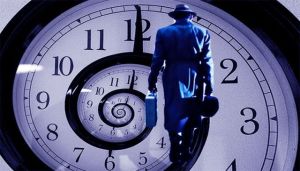B2B Sales and Time Travel
- Home
- Persuasion Articles
- B2B Time Travel
What is B2B sales time travel?
B2B sales time travel requires the ability to accurately evaluate potential customers and categorize them into three distinct groups: buyers, prospects, and suspects. Each group represents a different stage in the buying journey and requires a tailored approach from the seller.
You'll need look at it in the context of time to decision, not close, but the buyer’s timeline, decision.
In any given market, you have people who are actively in the midst of a decision, call them buyers.
Another group that we’ll call prospects know a purchase decision will need to be made, say around buying new production equipment. The equipment is not needed until next year; their interest and engagement are casual.
And then there the last group, those who could care less we exist, the Suspects.
In B2B Sales you need to time travel forward and assess where your prospect is at and adjust your approach accordingly

More About the Different Classifications
Buyers are the individuals who are actively engaged in the decision-making process. They have identified their needs, recognized the value of your product or service, and are seeking specific information such as product specifications, pricing details, and return on investment (ROI) calculations. For these buyers, your role as a seller is to provide comprehensive information, address their concerns, and highlight how your offering can meet their specific requirements.
Prospects, on the other hand, are aware that a purchase decision will need to be made in the future but are currently in the early stages of their buying journey. They may have a general interest in your industry or solution but haven't reached the point of immediate commitment. Engaging with prospects requires a delicate balance between building their interest and desire while avoiding overwhelming them with premature sales tactics. Educating them about the benefits and advantages of your product or service can help nurture their interest and guide them towards becoming future buyers.
Finally, there are the suspects, who may not even be aware of your existence or have any immediate need for your offering. These individuals are unlikely to convert into buyers, and spending excessive time and resources on them can be counterproductive. As a salesperson, it is crucial to recognize suspects early on and disqualify them from your target audience, focusing instead on more promising prospects and buyers.
Summary
Based on their time to decision (commitment), they will each be exploring and validating different elements of their journeys.
- A Buyer is all about specs, product specs, price specs, ROI specs etc
- A Prospect that will be making a purchase sometime in the future will be interested in learning, walking that fine line between interest and desire.
- A Suspect filters everything through the lens of the world is good, bring on the future. All happy! Everything is good, eyes forward,, nothing needed here and ignores the warning that "winter is coming
Trouble arises for salespeople when, encouraged by their sales manager, they talk to all these people as though they are a Buyer.
There is a potential buyer in all of them. And you need to talk to common interest, use language they can understand and give the understanding that they’re going to expand and flourish in the future when they purchase your product or service.
Successful B2B salespeople possess the ability to distinguish between these three groups and tailor their approach accordingly. They understand that each group has different motivations, priorities, and timelines. By speaking to the common interests of buyers and prospects, using language they can relate to, and conveying the potential future growth and success they can achieve through your product or service, you can effectively engage and convert them into customers.
Key Takeaways:
- B2B sales time travel is the ability to evaluate potential customers and put them into three categories. There are buyers that are ready now, future prospects and suspects.
- The seller has to talk to each of these groups differently according to their buying needs.
- The seller needs to disqualify the people that won’t lead to a deal. The successful salesman needs to be able to tell these people apart.
- Home
- Persuasion Articles
- B2B Time Travel